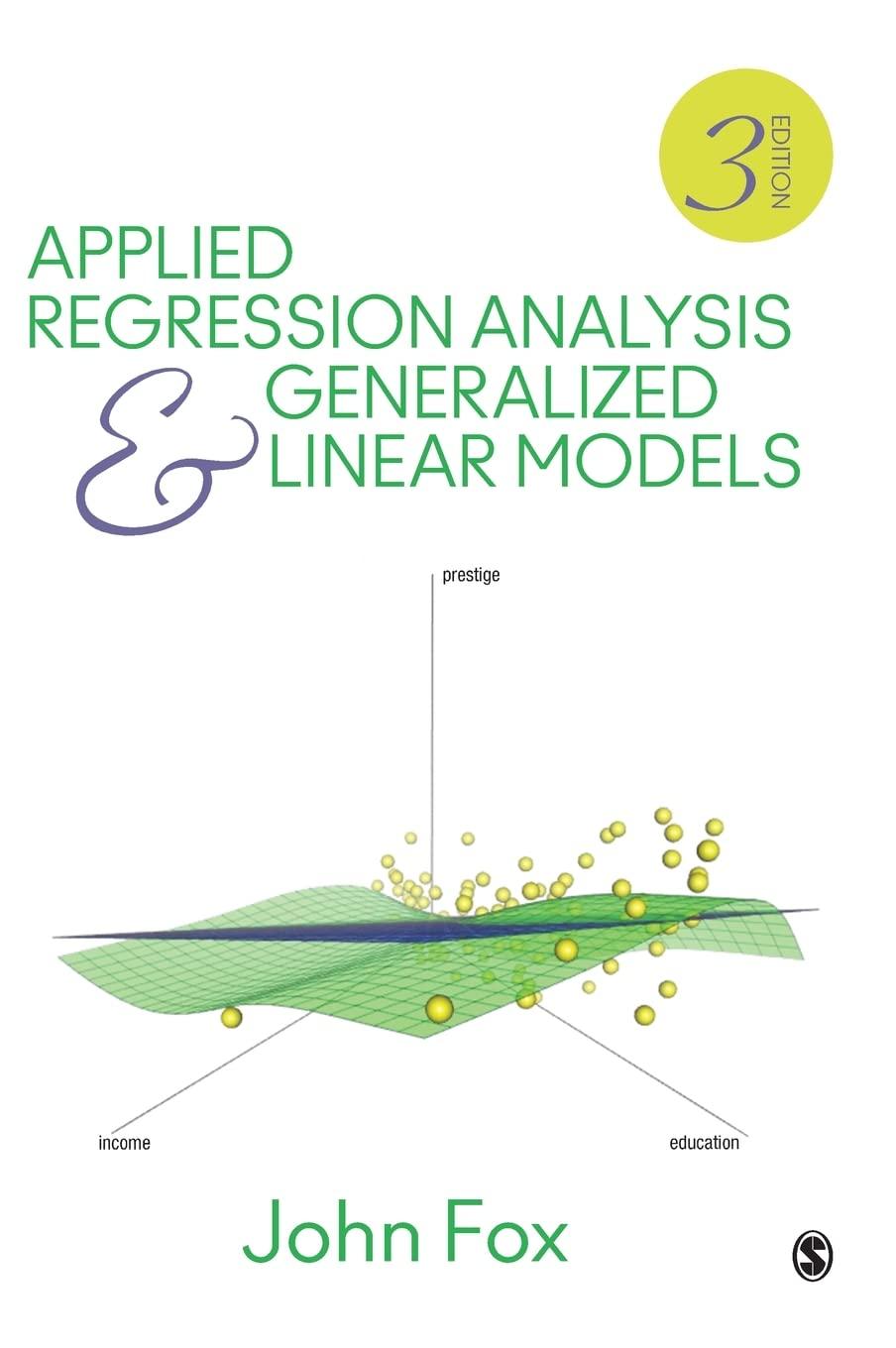'The impact of nonconstant error variance on OLS estimation: Suppose that Yi xi ...
Question:
'The impact of nonconstant error variance on OLS estimation: Suppose that Yi ¼ α þ βxi þ εi, with independent errors, εi ; Nð0; σ2 i Þ, and σi ¼ σεxi. Let B represent the OLS estimator and b
β the WLS estimator of β.
(a) Show that the sampling variance of the OLS estimator is VðBÞ ¼
PðXi " XÞ
2 σ2 i PðXi " XÞ
2 h i2 and that the sampling variance of the WLS estimator is VðβbÞ ¼ σ2 ε Pw2 i ðXi " Xe Þ
2 where Xe [ ð
Pw2 i XiÞ=ð
Pw2 i Þ. (Hint: Write each slope estimator as a linear function of the Yi.)
(b) Now suppose that x is uniformly distributed over the interval ½x0; ax0), where x0 > 0 and a > 0, so that a is the ratio of the largest to the smallest σi. The efficiency of the OLS estimator relative to the optimal WLS estimator is Vðβb Þ=VðBÞ, and the relative precision of the OLS estimator is the square root of this ratio, that is, SDðβb Þ=SDðBÞ.
Calculate the relative precision of the OLS estimator for all combinations of a ¼ 2, 3, 5, 10 and n ¼ 5, 10, 20, 50, 100. For example, when a ¼ 3 and n ¼ 10, you can take the x-values as 1, 1.222, 1:444; ... ; 2:778, 3. Under what circumstances is the OLS estimator much less precise than the WLS estimator?
(c) The usual variance estimate for the OLS slope (assuming constant error variance) is Vb ðBÞ ¼ S2 E PðXi " XÞ
2 where S2 E ¼ PE2 i =ðn " 2Þ. Kmenta (1986, Section 8.2) shows that the expectation of this variance estimator (under nonconstant error variance σ2 i ) is E½Vb ðBÞ) ¼ σ2 PðXi " XÞ
2 "
PðXi " XÞ
2 ðσ2 i " σ2Þ
ðn " 2Þ½PðXi " XÞ
2 )
2 where σ2 [ Pσ2 i =n. (*Prove this result.) Kmenta also shows that the true variance of the OLS slope estimator, VðBÞ [derived in part (a)], is generally different from E½Vb ðBÞ). If E½Vb ðBÞ)=VðBÞ
q is substantially below 1, then the usual formula for the standard deviation of B will lead us to believe that the OLS estimator is more precise than it really is. Calculate E½Vb ðBÞ)=VðBÞ
q under the conditions of part (b), for a ¼ 5, 10, 20, 50 and n ¼ 5, 10, 20, 50, 100. What do you conclude about the robustness of validity of OLS inference with respect to nonconstant error variance?
Step by Step Answer:

Applied Regression Analysis And Generalized Linear Models
ISBN: 9781452205663
3rd Edition
Authors: By John Fox





